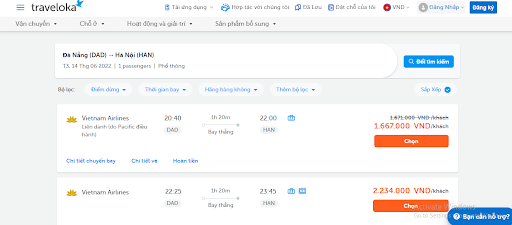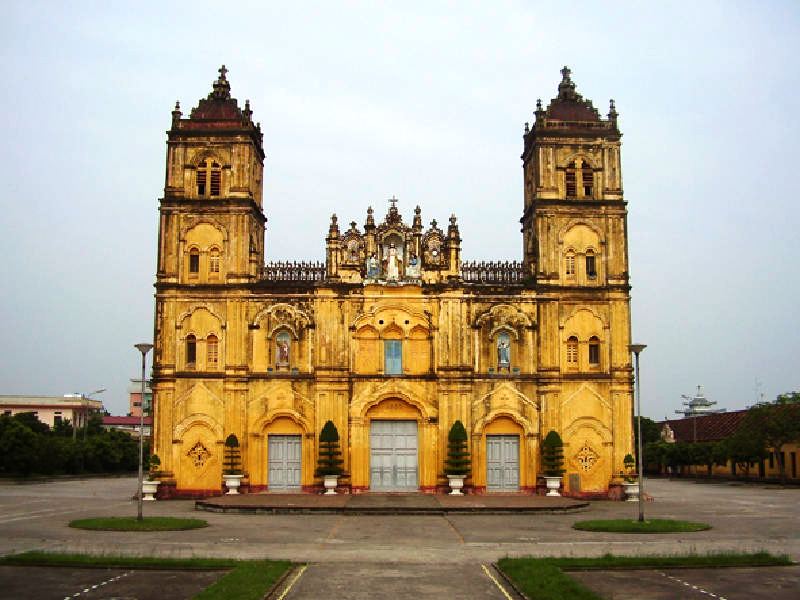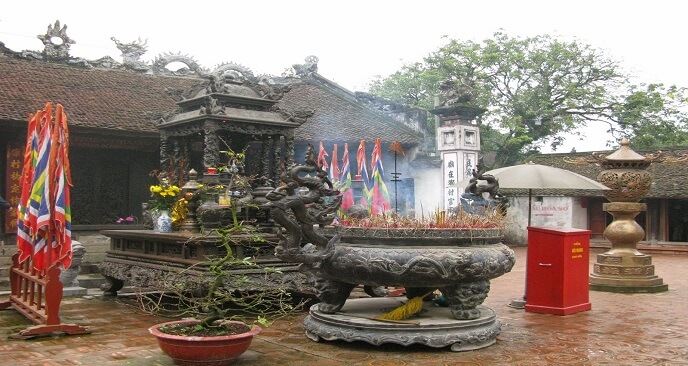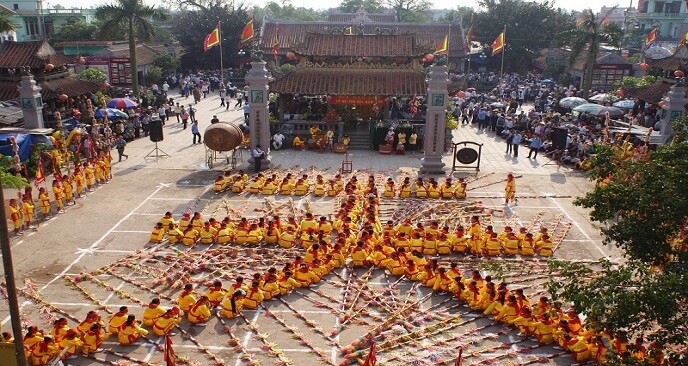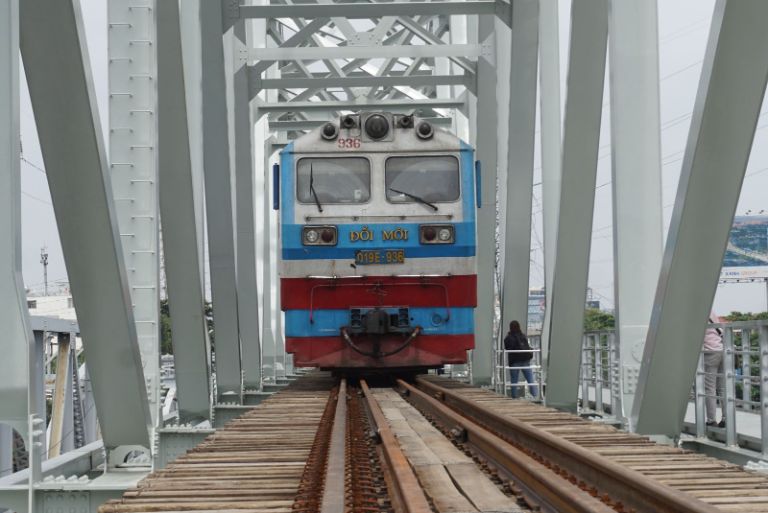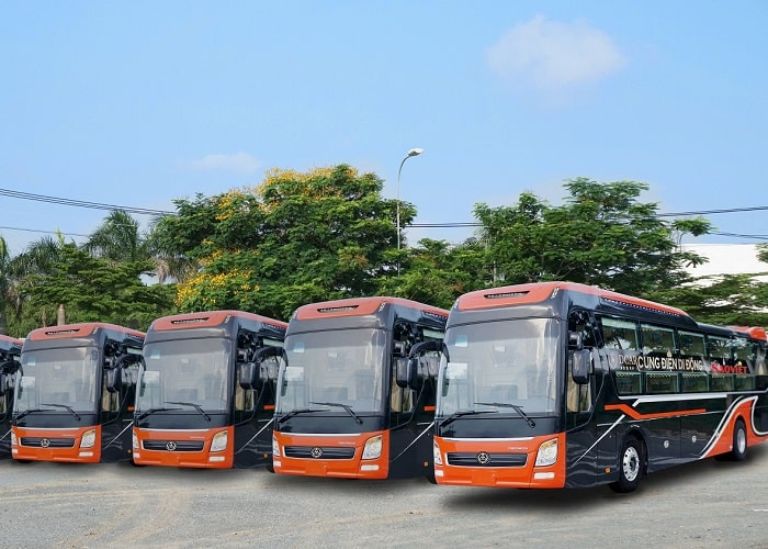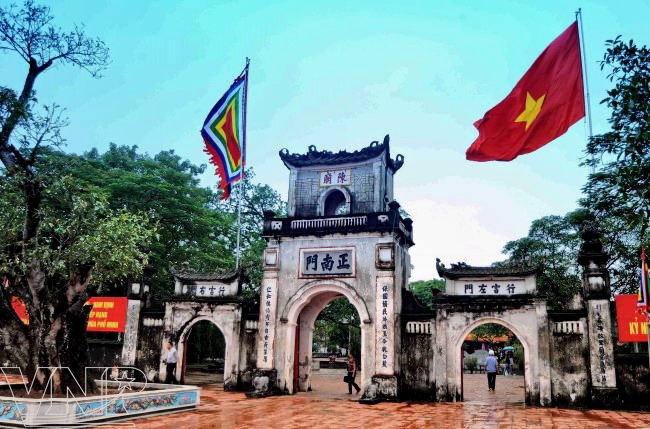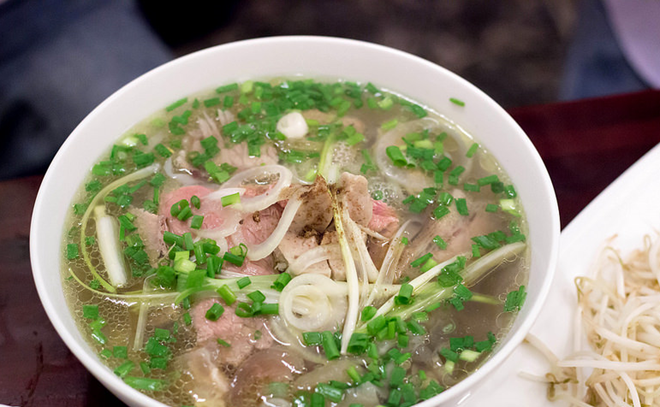Top 11 Điểm du lịch văn hóa tâm linh nổi tiếng ở Nam Định
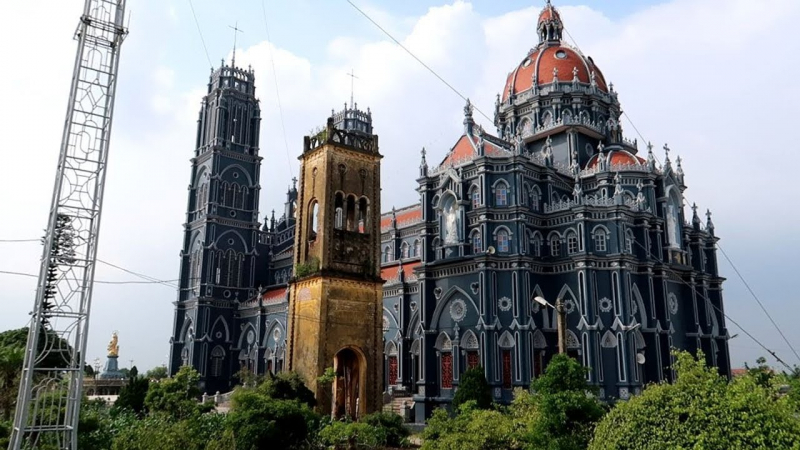
Nam Dinh is one of many provinces with many famous spiritual tourist sites not only for domestic people but also for foreign tourists, here are places that tourists cannot ignore when visiting. Nam Dinh hometown.
Contents
- 1 Thanh An Pagoda (Church Ca)
- 2 Tran Temple
- 3 Pho Minh Pagoda (Temple of the Tower)
- 4 Bao Loc Temple
- 5 Thick Cover
- 6 Keo Hanh Thien Pagoda (Kong Su Pagoda)
- 7 Co Le Pagoda
- 8 Palace of Quang Cung
- 9 Luong Pagoda (Temple of Hundred Gian)
- 10 Phu Nhai Church
- 11 Franciscan Church
Thanh An Pagoda (Church Ca)
Address: No. 45 Han Thuyen Street, Vi Xuyen Ward, Nam Dinh City, Nam Dinh Province.
Legend has it that Thanh An Pagoda (also known as Ca Pagoda) was built in the Tran Dynasty and has been restored many times. The current architecture has been reconstructed since 1982 on a large scale, serving as a basis for studying and worshiping for a large number of monks and nuns in the province, tourists and occupants. valuable antiques.
In the 6th Canh Lich year of Mac Phuc Nguyen’s reign (1553), the pagoda was built in Ben Ngu as a place of practice for a number of royal concubines and princesses of the Tran dynasty. By the time of Mac Dang Chinh (1530-1539), the water of the Vi Hoang River increased, the riverbanks were eroded a lot, the Tran family in Vi Hoang land moved the pagoda to its present position. The pagoda was built in Dinh font style, the front side worships Buddha, the right side is to worship Tan Vien god, the left side is to worship Cao Mang Dai Vuong, a general under Linh’s command from the mother country of the Tran dynasty, who made great contributions to King Tran’s rebellion. strategic victory against the Nguyen Mong invaders for the first time.
Thanh An Pagoda is the place where the Nam Dinh Provincial Buddhist Administration Office is located.
Tran Temple
Address: Tuc Mac village, Loc Vuong commune, outside Nam Dinh.
Main Festival: From the 15th to the 20th day of the 8th lunar month every year
Opening ceremony: 0:00 on the 15th day of the first lunar month every year
Every year, every Tet to spring, the atmosphere eagerly awaits the opening ceremony of Tran Temple bustling everywhere. Right from the afternoon and evening of January 14 of the lunar calendar, the whole South city is bustling in the atmosphere of the host welcoming guests from all over the world to ask for seals and go to the ceremony. Tran temple relics include Thien Truong temple worshiping 14 Tran kings, built in the Later Le dynasty and Co Trach temple worshiping Tran Hung Dao, built in the Nguyen dynasty. Go to Tran Temple at the beginning of the year, light a candle and pray for a new year of good health, favorable work, successful study, and good luck.
Every year, when going to the Tran Temple festival to open the seal, not only Nam Dinh people but also people all over the country flock to wait for midnight to ask for a seal from the king to be blessed with fortune in the new year seems to have been successful. rate. According to regulations, the royal seal stamped on yellow paper is for “common people”, and the seal stamped on red silk is for distinguished guests and high-ranking officials to attend. Only one of every 10 seals engraved on red silk is valuable because it was cut from the royal robes of kings. And if anyone is lucky enough to have that silk, they are considered to have won fortune and long life.
Pho Minh Pagoda (Temple of the Tower)
Address: Tuc Mac village, Loc Vuong commune, Nam Dinh suburb.
Main Festival: From the 15th to the 20th day of the 8th lunar month every year
Pho Minh Pagoda is commonly known as Thap Pagoda because the unique highlight of the pagoda is Pho Minh Tower, a 14-storey tower, 21.2m high, weighing 700 tons, facing south, the ground is square and side The bottom of the base is 5.21m long, the doors of the floors on 4 sides are carved according to the archway. This is one of the remaining vestiges of a time of Dong A – Tran Dynasty. According to legend, the pagoda was built by King Tran Thai Tong in 1262 in the west of Trung Quang Palace, Thien Truong Palace. But the inscriptions on the stele record the pagoda dating from the Ly Dynasty, which was expanded on a large scale in the Tran Dynasty. After many renovations, the pagoda still retains many artistic vestiges of the Tran dynasty.
In the temple, there is a statue of Tran Nhan Tong entering Nirvana (a reclining statue); statue of Truc Lam three ancestors under the shadow of bamboo; Some beautiful Buddha statues. The large bell of the pagoda is engraved with the text “Phu Minh Peak Tu” cast in 1796. The pagoda has been recognized by the Ministry of Culture as a national historical-cultural relic.
Bao Loc Temple
Address: Bao Loc village is located in My Phuc commune, My Loc district, Nam Dinh province
Main Festival: From the 15th to the 20th day of the 8th lunar month every year
To commemorate the great merit of Quoc Cong Tiet Che Hung Dao, the great King Tran Quoc Tuan, the people built the main temple where he was born and named it Bao Loc Temple. The temple was built on the old hamlet of An Sinh Vuong Tran Lieu, the father of Hung Dao Dai Vuong. In 1979, archaeologists discovered many relics of the Tran dynasty such as flower bricks, terracotta dragon heads, tower models, bowls, plates, etc. 600m to the east of the temple, this proves that this area was formerly the the old Tran Dynasty palace.
Every year, on his cavalry day on the 20th of the 8th lunar month, visitors from all over the world have the opportunity to visit the traditional festival of Tran Hung Dao (August Father’s death anniversary, Mother’s death anniversary in March), this is a big festival that attracts a lot of people. join. In addition to sightseeing, learning the historical significance and architectural art of the monument, visitors also enjoy some unique folk games such as wrestling, human chess, cotton card dance… More importantly, in the journey. In the process of the source, each person feels protected and enlightened by profound moral and humanistic lessons from the career life of Hung Dao great king Tran Quoc Tuan – a saint in the hearts of the people.
Thick Cover
Address: Kim Thai commune, Vu Ban district, Nam Dinh province
Main Festival: From the 3rd to 8th day of the third lunar month every year
The custom of worshiping the Holy Mother is a beautiful and sacred tradition of the Vietnamese people. According to the ancient legend, Holy Mother Lieu Hanh (Lord Lieu Hanh) is the second daughter of the Jade Emperor, sent down to earth to saving suffering and rescue, helping people overcome austerity, conquering nature, should be honored as the mother of all people, mother of the world, a saint in the Four Immortals of Vietnamese folk beliefs.
Holy Mother Lieu Hanh is worshiped in many places such as Cat Street (Thanh Hoa), Song Temple (Nghe An), Phu Tay Ho (Hanoi), … But especially every year, in the first week of the third lunar month, travel Visitors from all over the world are eager to make pilgrimages to Phu Day Association in Kim Thai commune, Vu Ban district, Nam Dinh province because it is said that this is the place where Mother Mother was born.
Phu Day relic includes Tien Huong palace, Van Cat palace and Chua Lieu mausoleum. Although it has been restored many times, it still retains the traditional rituals such as the procession of bowls and tributes, the dragon dance festival on the top of Kim Thai mountain, folk games such as wrestling, tug of war, etc. chess… Besides, famous local specialties are also introduced for visitors to enjoy.
Keo Hanh Thien Pagoda (Kong Su Pagoda)
Address: Hanh Thien village, Xuan Hong commune, Xuan Truong district, Nam Dinh province.
Main Festival: From the 10th to the 16th day of the 9th lunar month every year
Keo Hanh Thien Pagoda has long been famous for its beautiful landscape and quiet space. The pagoda is located on a large flat land near the Red River and Ninh Co River in Hanh Thien village, the village has the shape of a carp, creating the mysterious legend of the temple. In addition to worshiping Buddha, the pagoda also worships Duong Khong Lo, a poet of the Ly – Tran dynasties who had a deep education in Buddhism, was good at healing and was also good at poetry and literature. public support the king to help the country.
According to the people of Hanh Thien village, the whole village of Hanh Thien has 35 households, currently living on the land of incense and fire of the pagoda. Previously, this whole land was cut by the Ly dynasty for Duc Khong Lo, so the whole village had to take turns to take care of and worship him. That is the “reason” that the people of Hanh Thien village do incense work, look after the temple instead of monks, so Keo Hanh Thien Pagoda is the only temple famous for its name. “Pagoda without monks”.
The festival of Keo Hanh Thien pagoda includes: incense offering ceremony, worshiping ceremony, sutra chanting, dragon dance, boat racing on the Red River. When coming here, tourists can also visit the memorial house of Comrade Truong Chinh, an outstanding revolutionary, an excellent son of Hanh Thien’s hometown.
Co Le Pagoda
Address: Co Le town, Truc Ninh district, Nam Dinh province
Main Festival: From the 13th to the 16th day of the 9th lunar month every year
Co Le Pagoda, whose name is Quang Than Tu, is a famous historical-cultural relic and scenic spot in the Red River Delta, established in the 12th century of the Ly Dynasty. In addition to worshiping Buddha, the pagoda also worships Zen Master Nguyen Minh Khong, who is very good at medicine, once cured King Ly Than Tong from a dangerous illness.
Co Le Pagoda is the quintessential combination of Vietnamese traditional architecture with elements of Western architectural style, for that reason, the temple has become a famous scenic spot in the Red River Delta. In the temple, there is a tower of Cuu Pham Lien Hoa located in front of the gate of the temple built in 1926 – 1927, the tower has a 98-step spiral staircase to the top, from the top of the tower we can see the whole area. Legend has it that Buddhist followers, pilgrims up to this 98th step, touching the statue at the top of the tower, life will always be lucky.
Palace of Quang Cung
Address: Yen Dong commune, Y Yen district, Nam Dinh province
Main Festival: From the 1st to the 10th day of the third lunar month every year
Phu Quang Cung (also known as Phu Nap), is one of the centers of Vietnamese Dao Mother worshiping the first birth of Saint Mother Lieu Hanh, built nearly 600 years ago. This is a complex that was ranked as a provincial-level historical and cultural relic in 2005 and a heritage patronage certificate of the Vietnam Union of UNESCO Associations in 2011.
In the Palace of Quang Cung, there is still a bronze statue of Mother Goddess Lieu Hanh, which is considered one of the most unique works in the system of Mother worship sculptures in Vietnam. Unlike other places, the statue of Saint Mother Lieu Hanh in Phu Nap has many different and unique points. Mau Lieu has a very graceful sitting cross-legged posture in a simple outfit, with a calm face. The folds are simply created with two layers of robes on the outside and a peach bib inside, making the statue come alive and close.
Luong Pagoda (Temple of Hundred Gian)
Address: Hai Anh commune, Hai Hau district, Nam Dinh province
Main Festival: From the 13th to the 16th day of the third lunar month every year
Luong Pagoda, also known as the Hundred Gian Pagoda, the name is Phuc Lam Tu Tu, was built during the reign of King Le Hong Thuan (1509-1515) at the end of the 15th century and the beginning of the 16th century. The present pagoda has a large scale, including 100 rooms, It has the national architectural style of many eras, but the most prominent is the style of the Nguyen Dynasty in the 17th and 18th centuries.
On March 26, 1990, the pagoda was recognized by the Ministry of Culture and Information as a national historical and cultural relic. Having the opportunity to come to Nam Dinh, you should not miss a sightseeing tour of Phuc Lam Pagoda, so that you can find a peaceful place, dispel all the fatigue and worries of life and discover the beauty of nature. culture and traditions here.
Phu Nhai Church
Address: Phu Nhai Village, Xuan Phuong Commune, Xuan Truong District, Nam Dinh Province
Coming to Nam Dinh, tourists cannot help but visit Phu Nhai church because this is an extremely unique and unique religious architecture. This work has French architecture with decorative patterns, beautiful dome. Coming to Phu Nhai church, you can also admire the beautiful sculptures embossed on the side of the church along with impressive decorative lines of grapes.
In 2008, Phu Nhai Holy Temple was upgraded to Little Basilica, especially Visiting Phu Nhai Basilica, visitors will have the opportunity to admire The largest church in Indochina with classical architecture combined with modern style, especially the two 44m high bell towers in front with 4 bells transferred from France and used only on great occasions.
Phu Nhai Church is not only a religious work but also a tourist attraction for tourists from all over the world to learn more about the history and culture of the land where Catholicism first penetrated in Vietnam. .
Franciscan Church
Franciscan Church This is a church with quite unique architecture, and large, newly remodeled. On the way to Thinh Long beach, you will admire the beauty and majesty of Phancisco church.
Address: Hai Cuong- Hai Hau- Nam Dinh
Spiritual tourism in the early days of the new year has become a traditional cultural beauty of the Vietnamese people, expressing the spirit of drinking water, remembering the source, remembering ancestors and roots. Hopefully one of the above famous places will be your choice when visiting Nam Dinh
Đăng bởi: Nguyễn Hoàng Anh Minh


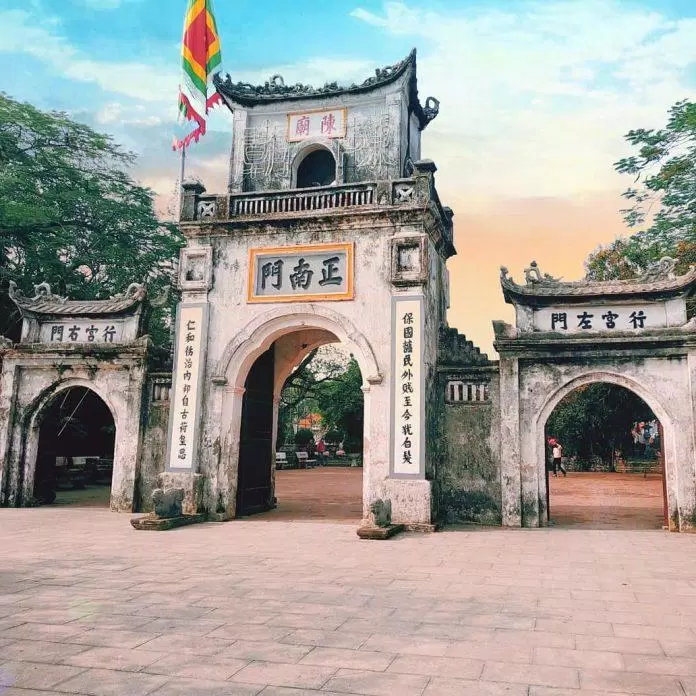
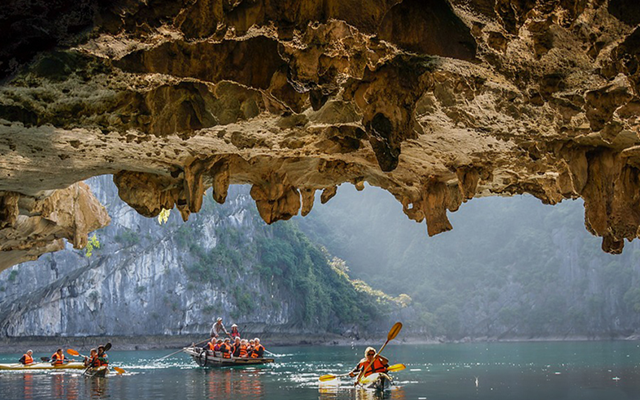




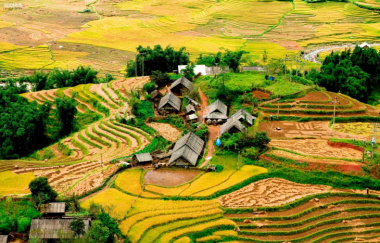
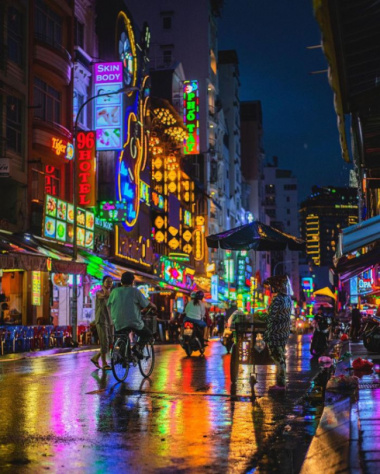









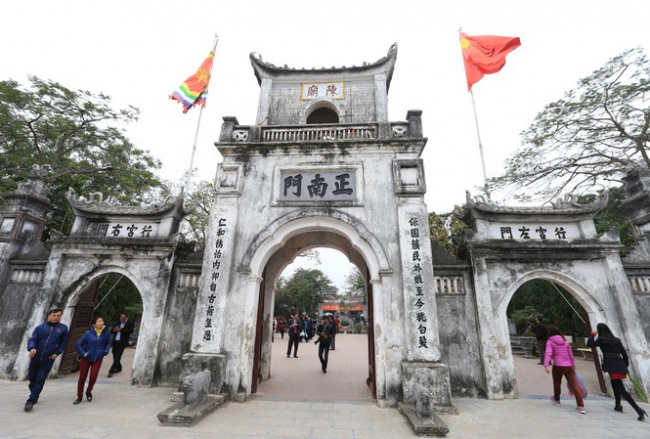
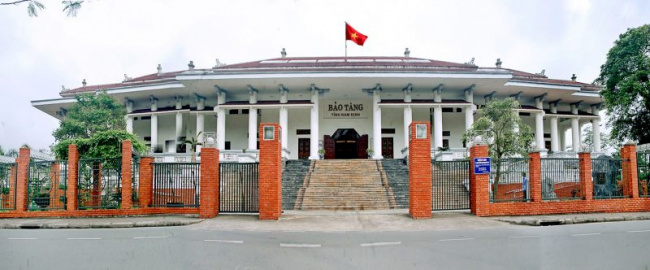
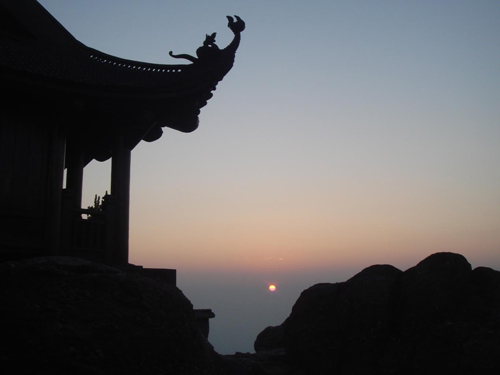

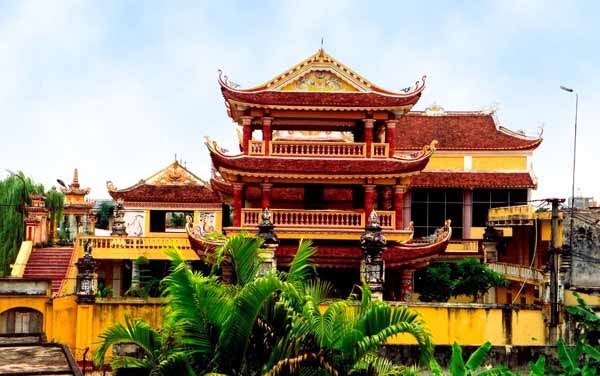
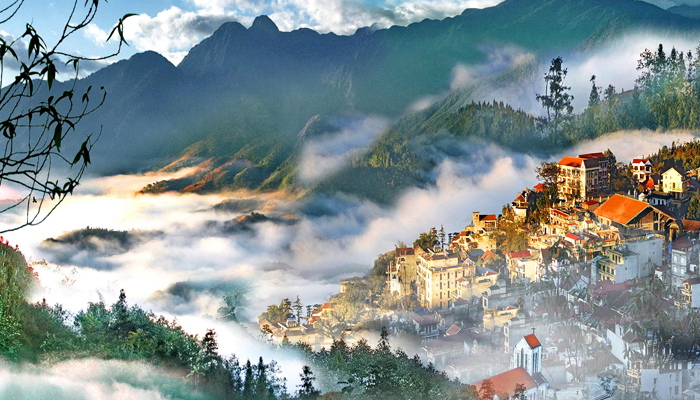
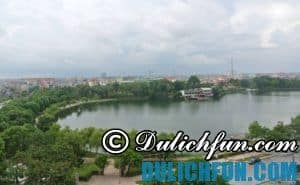


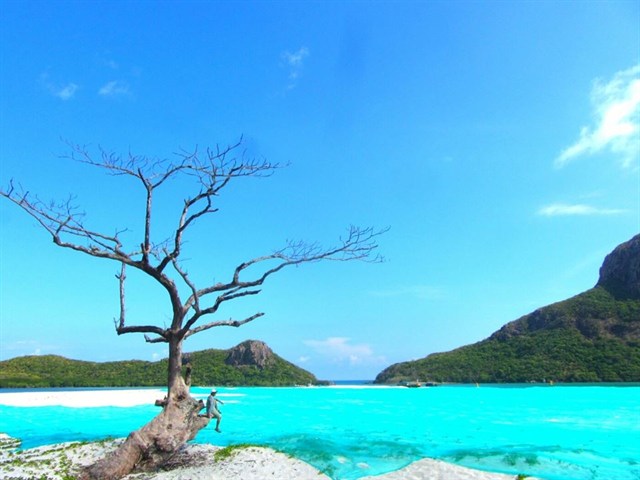
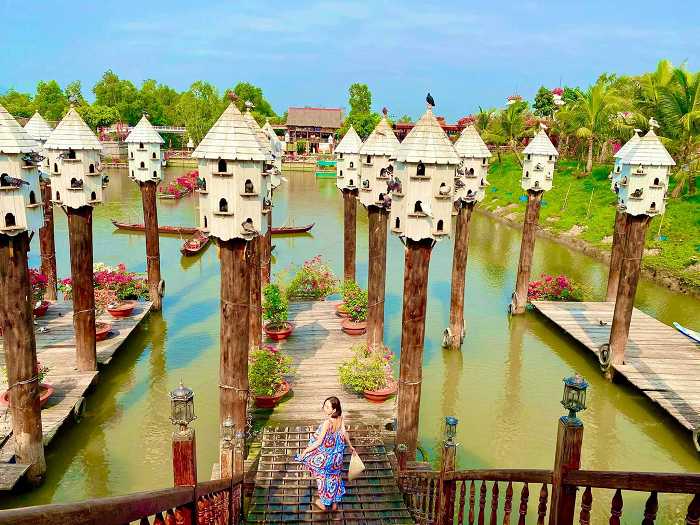




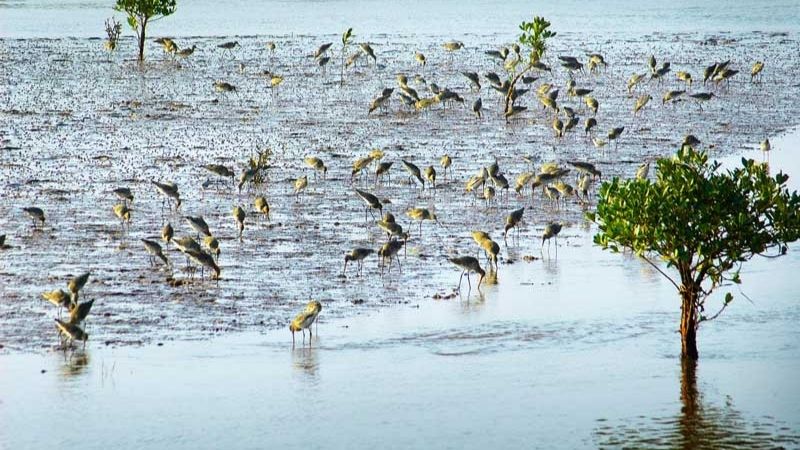
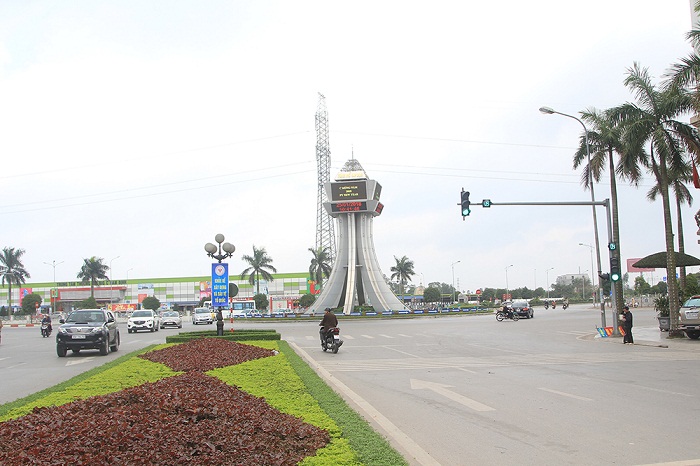



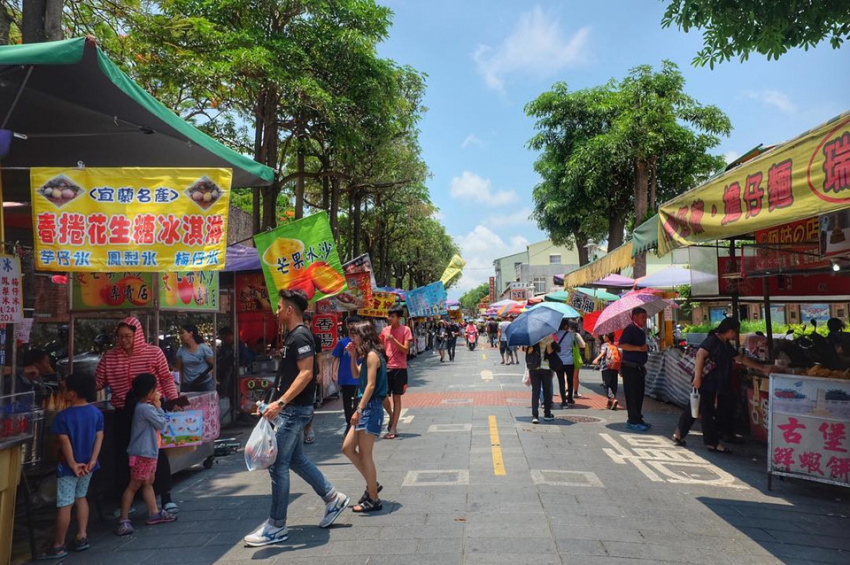
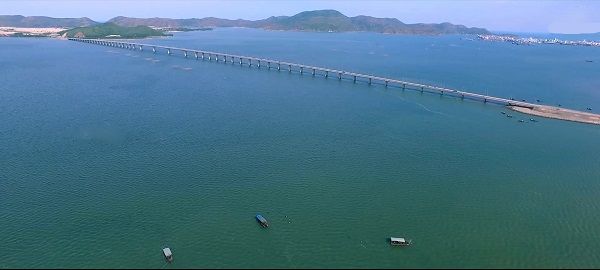
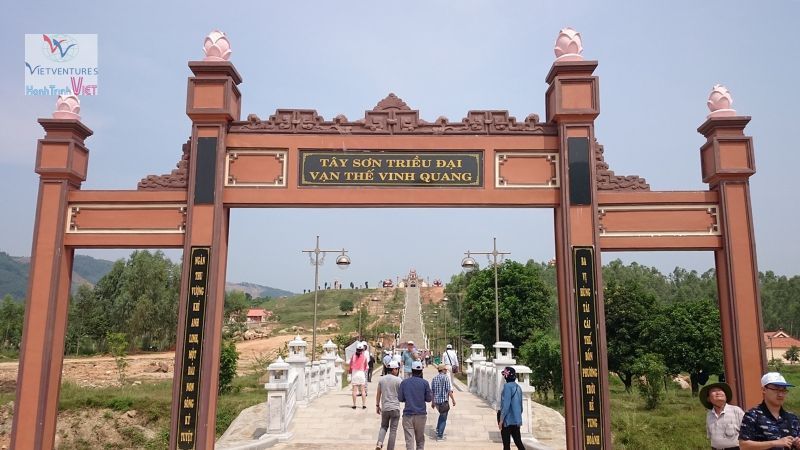
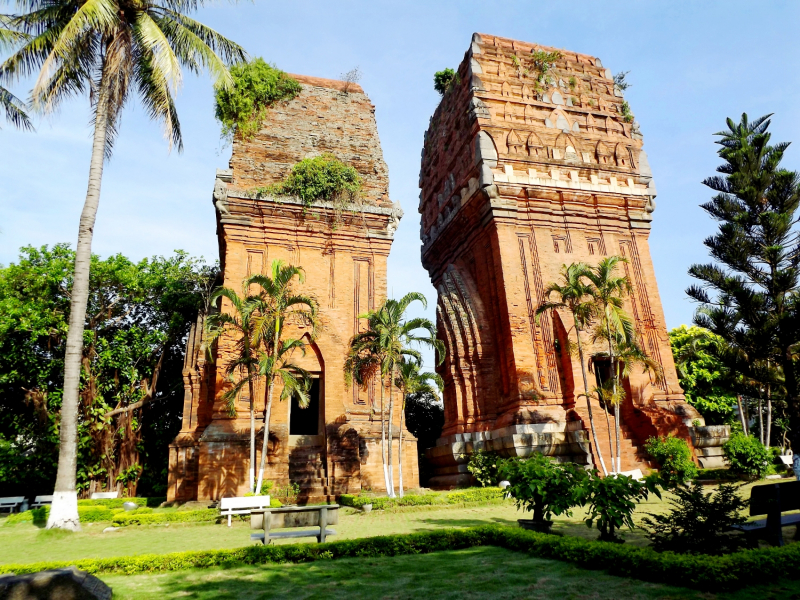
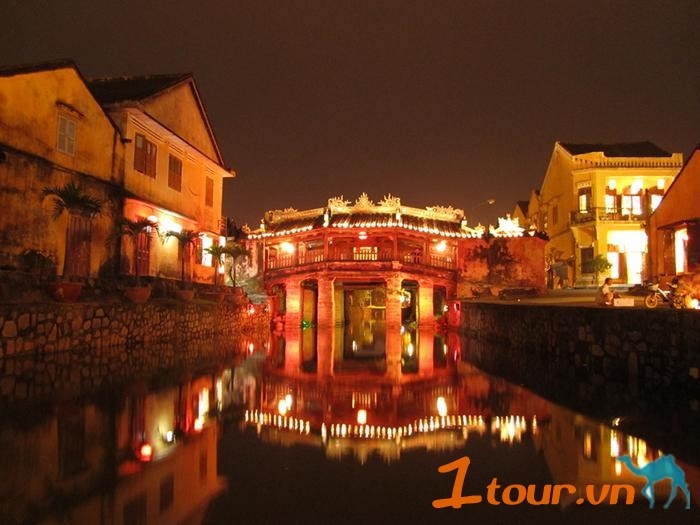
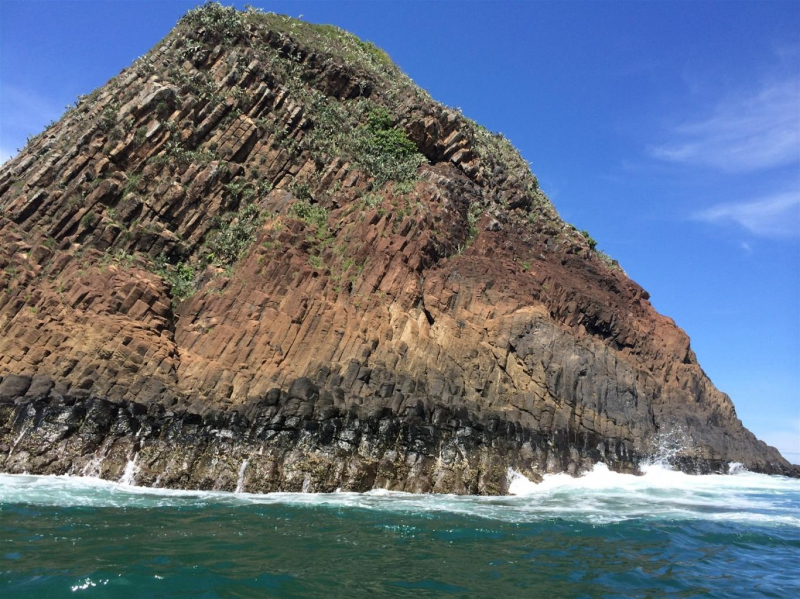

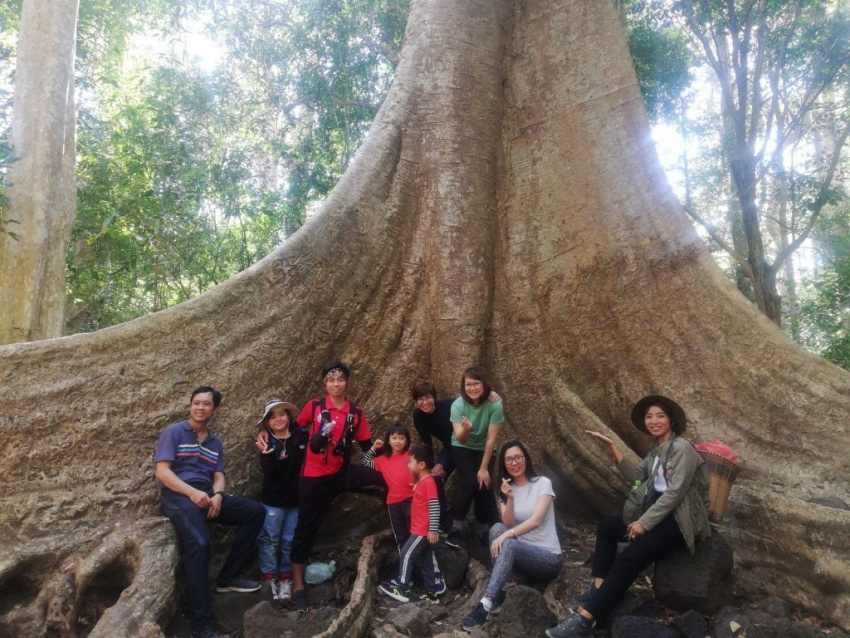
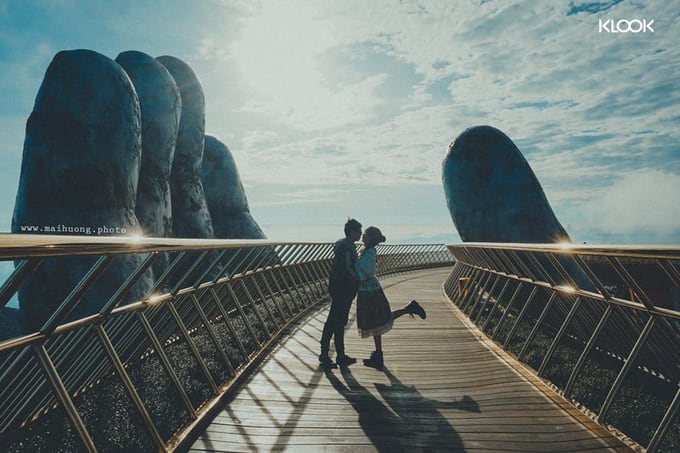
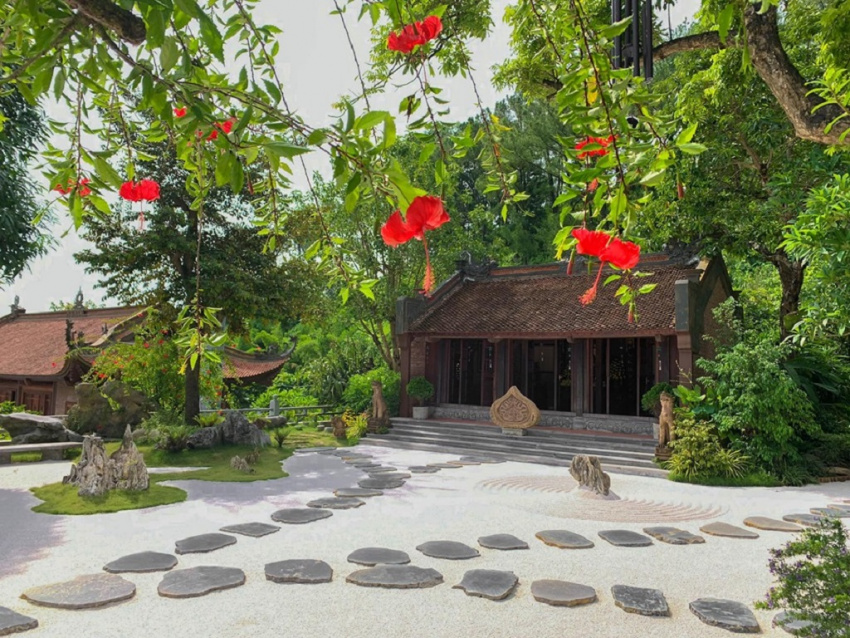
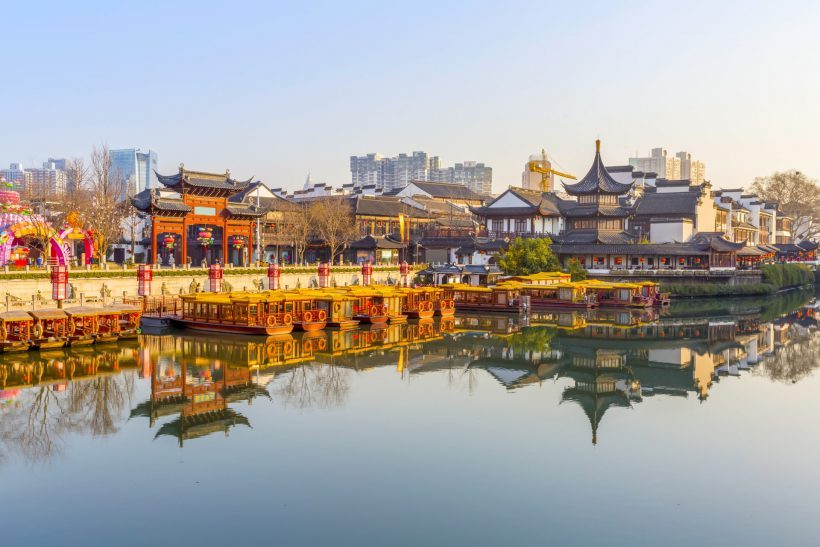
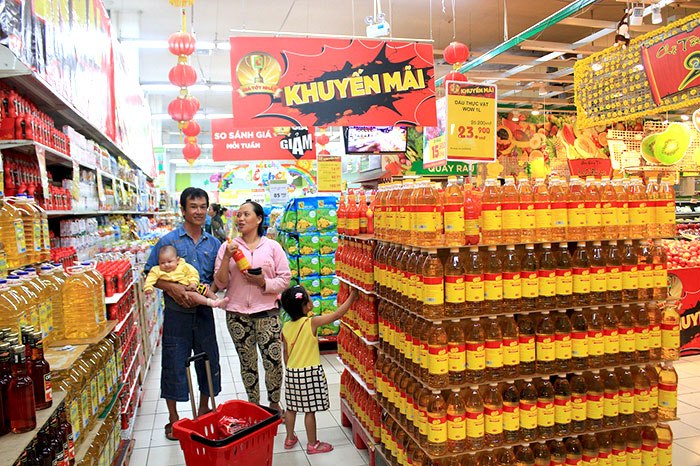
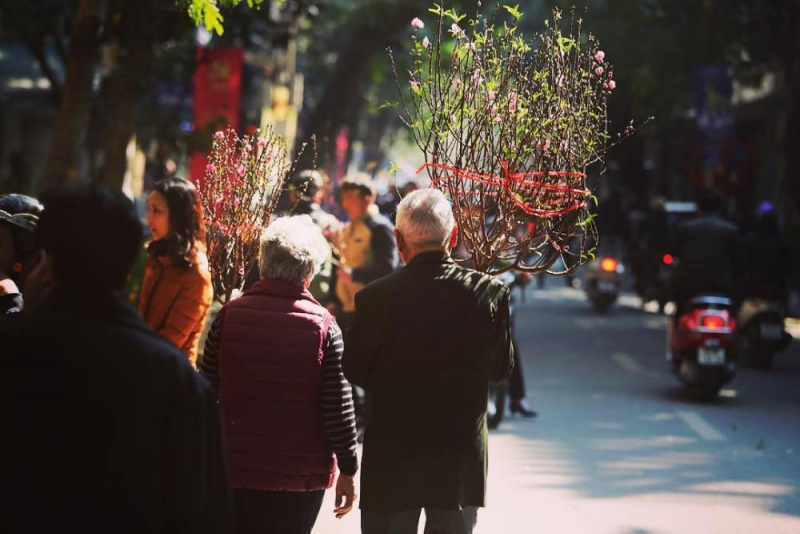
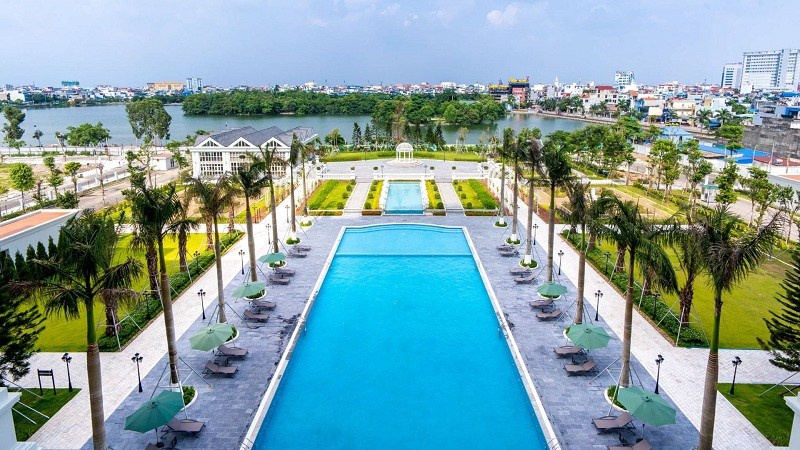
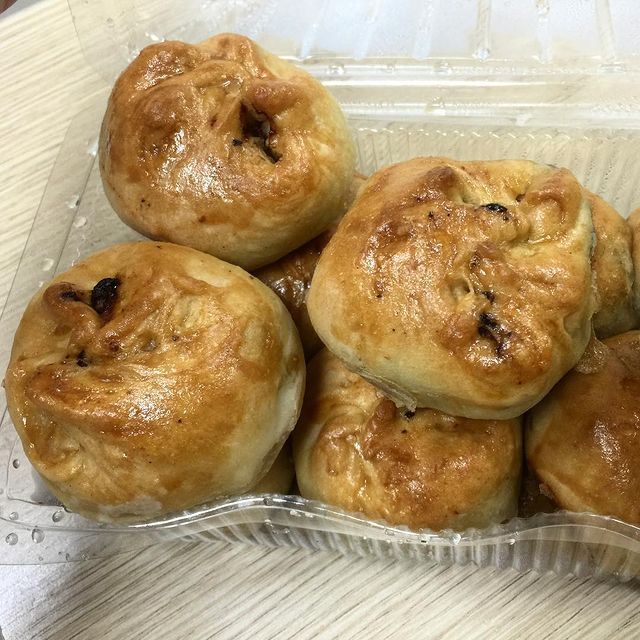

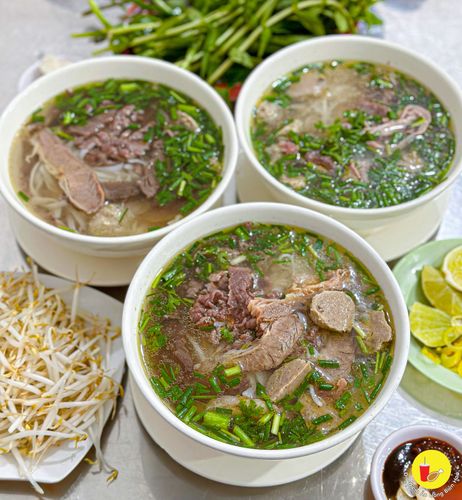
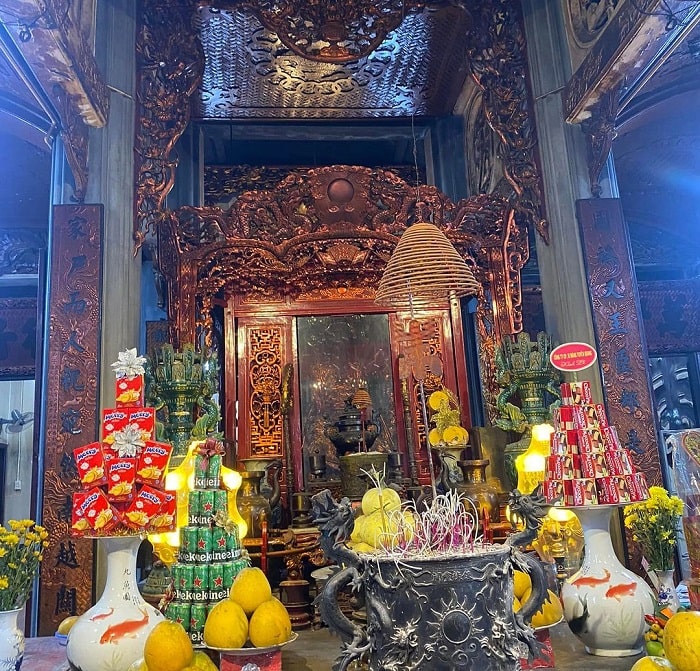

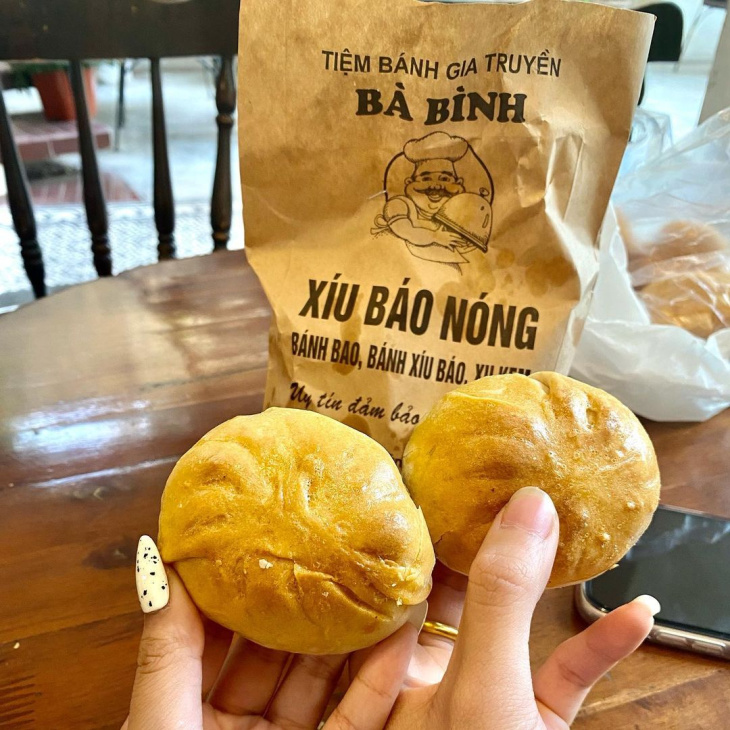
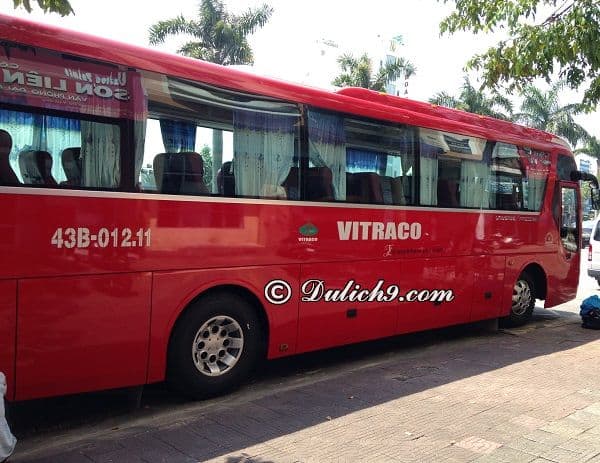


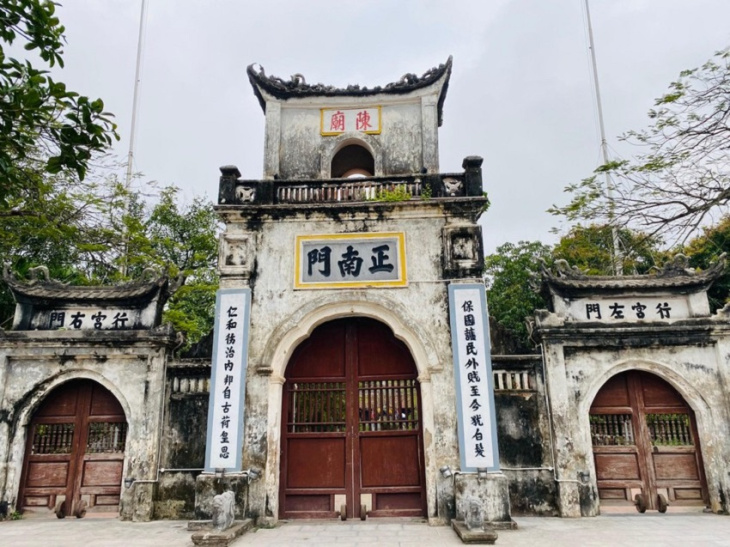
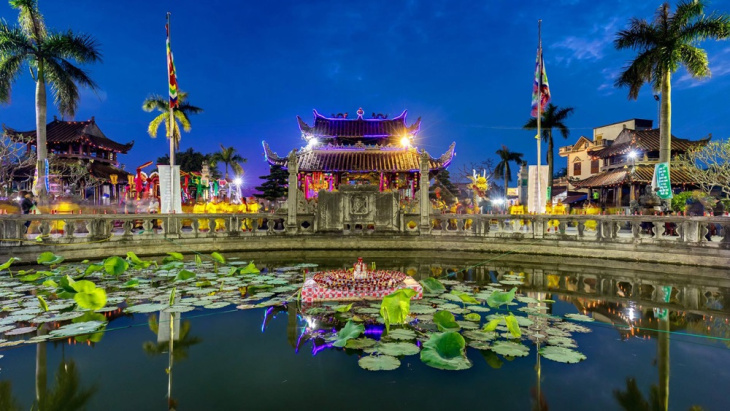




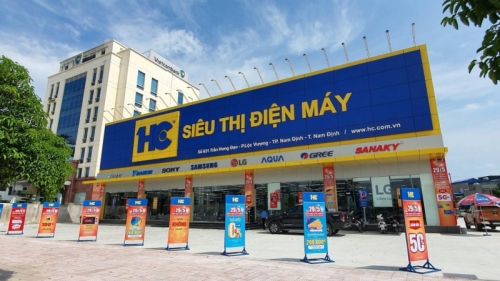

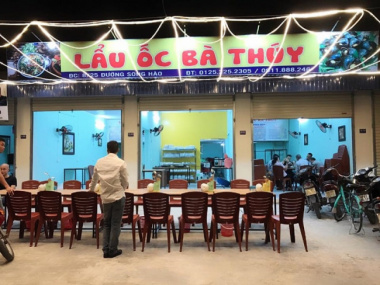

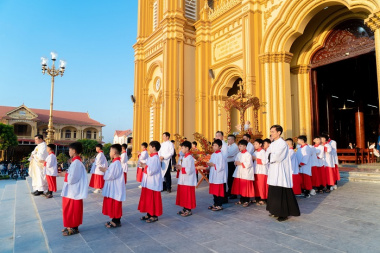


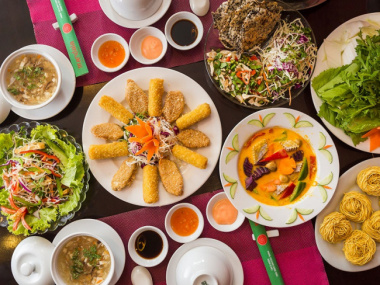
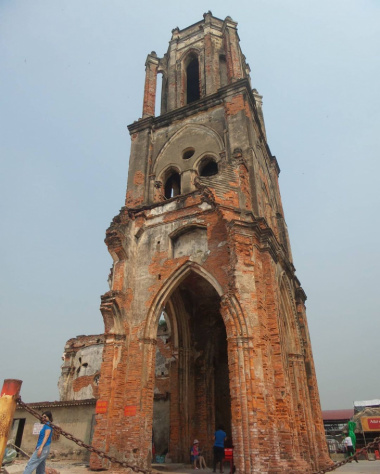
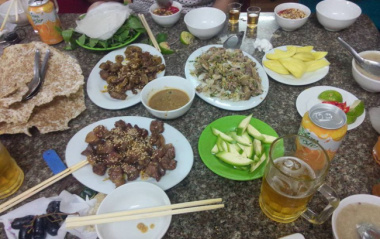


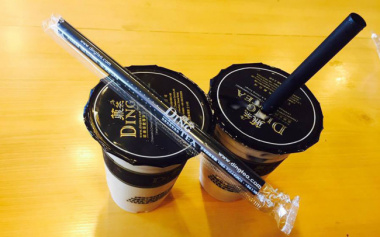
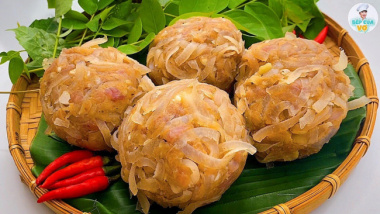
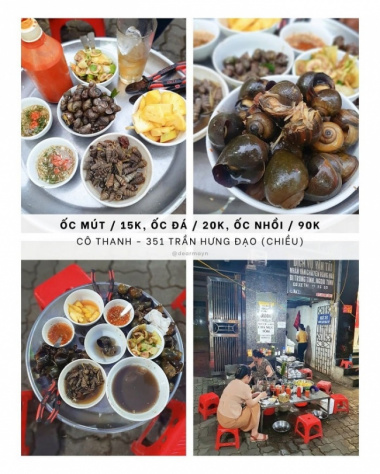
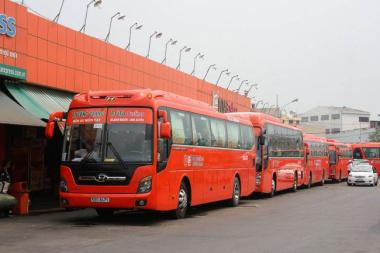




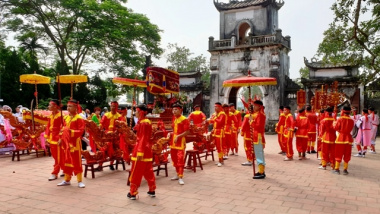
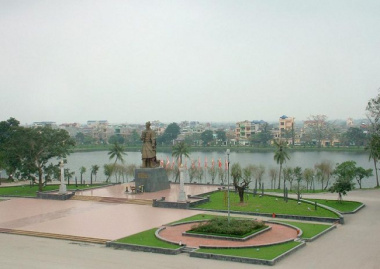
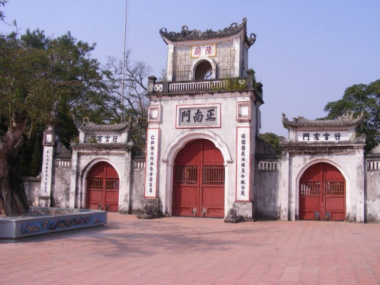
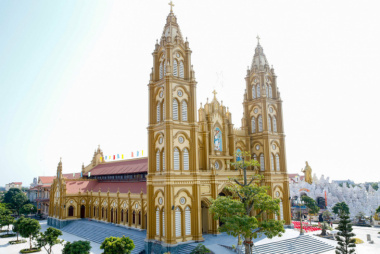

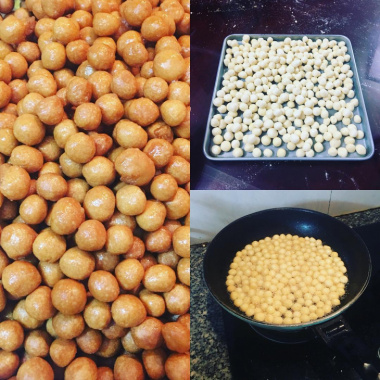
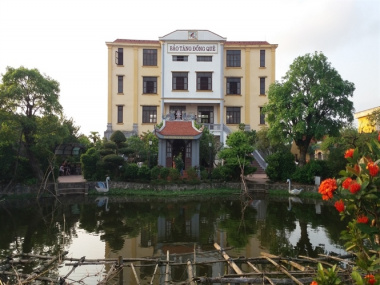
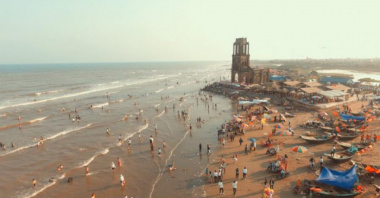


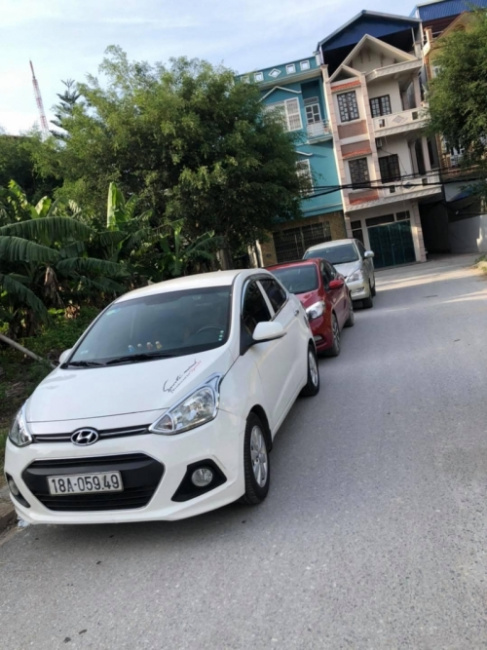
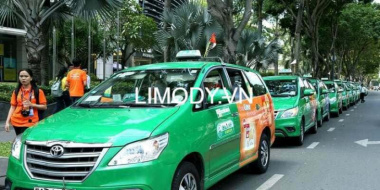
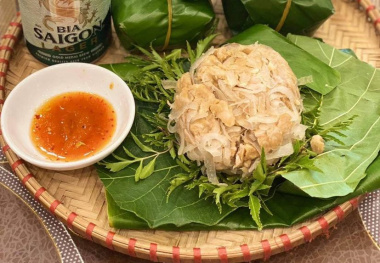

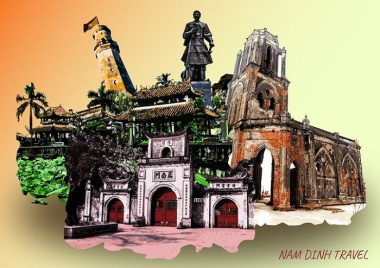

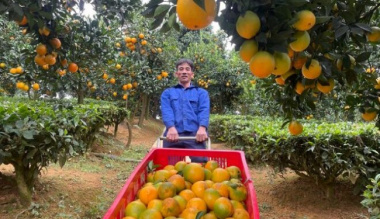

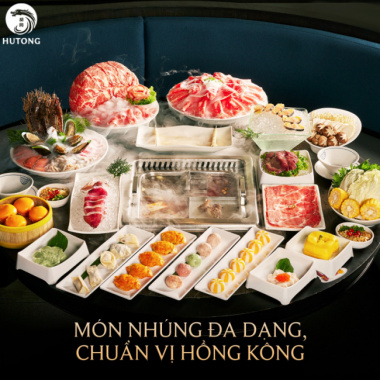
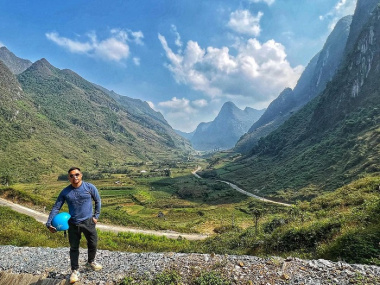

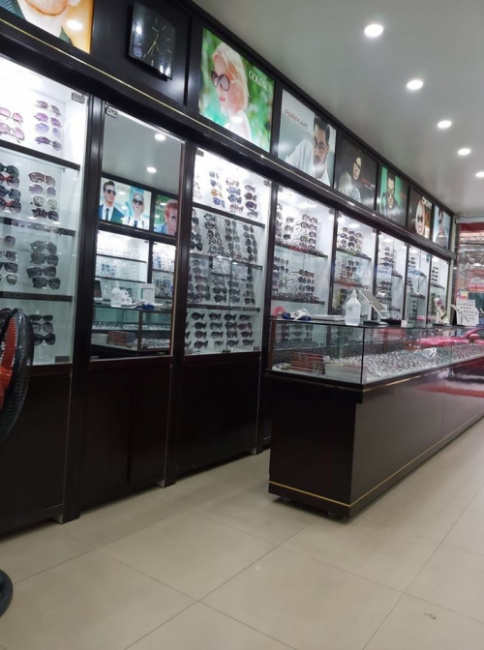



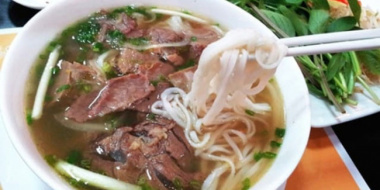
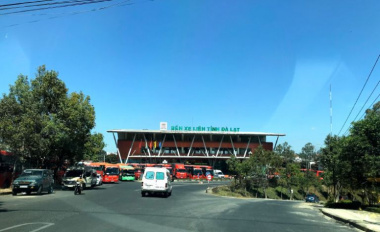
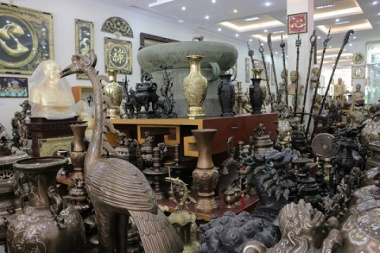
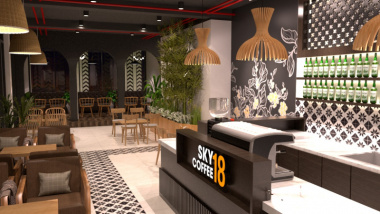


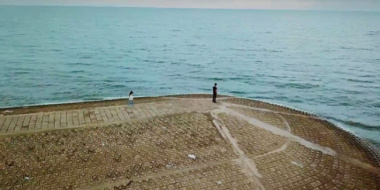
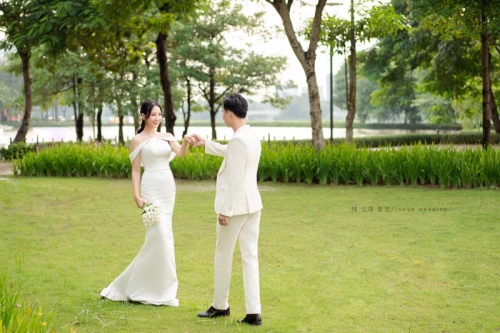





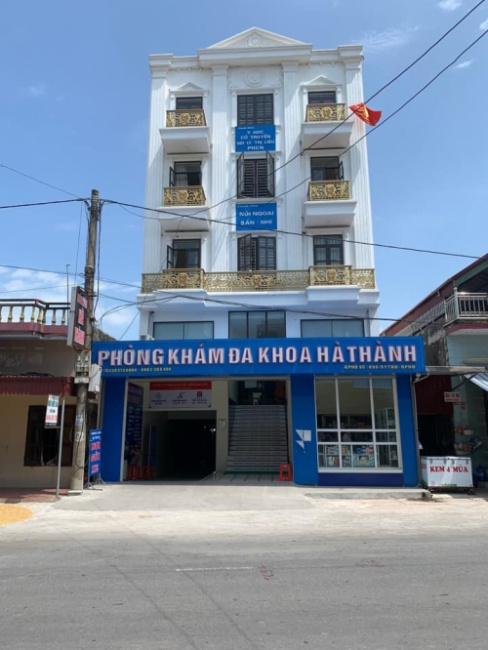
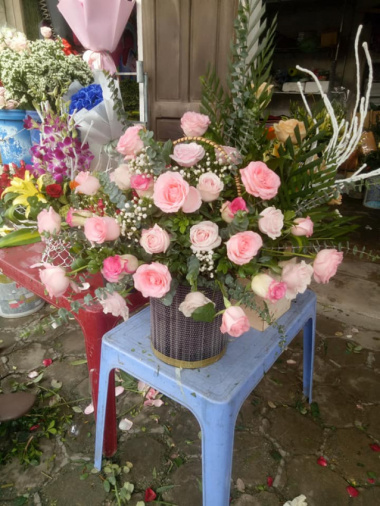


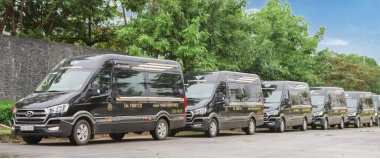
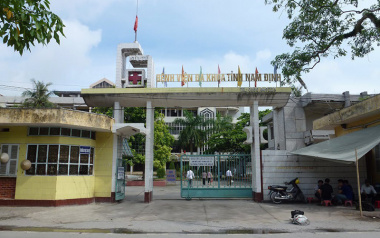





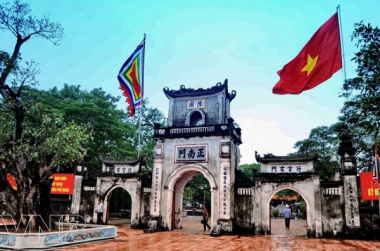



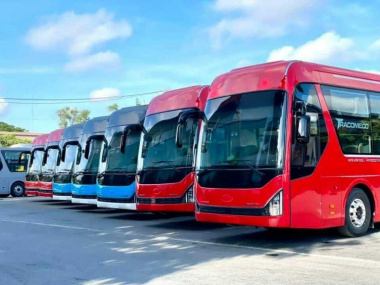



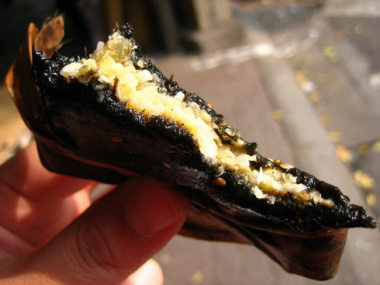

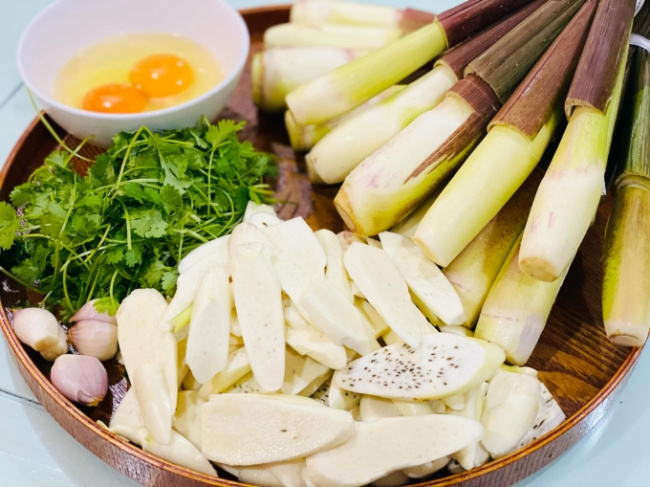
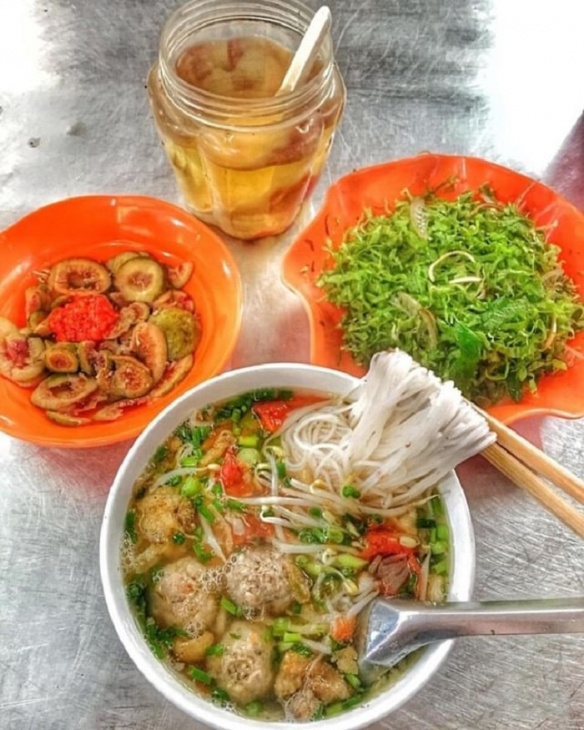
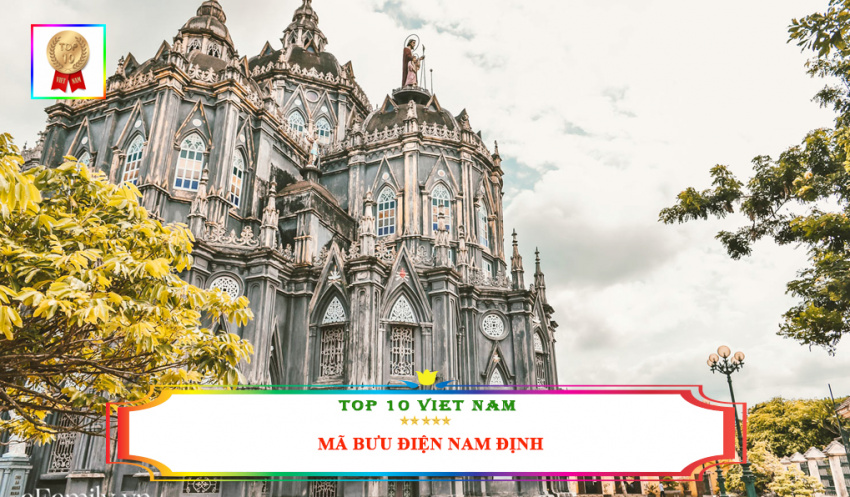


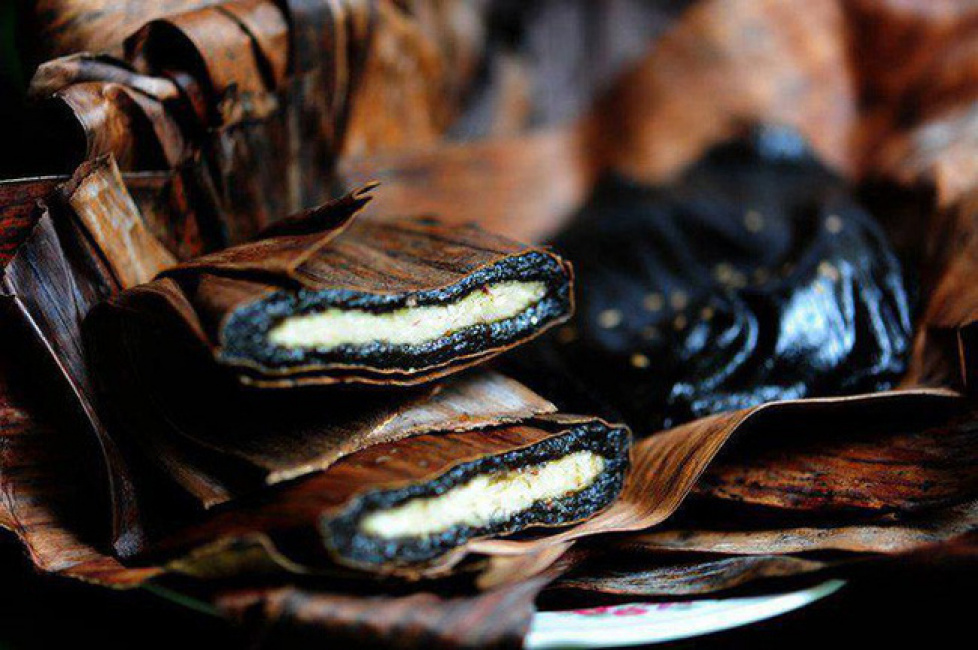







![[Nam Định] Top những món ngon ăn là nhớ mãi tại Nam Định](https://cdn.alongwalk.info/vn/wp-content/uploads/2022/06/23053210/image-nam-dinh-top-nhung-mon-ngon-an-la-nho-mai-tai-nam-dinh-165591193091299.jpg)
